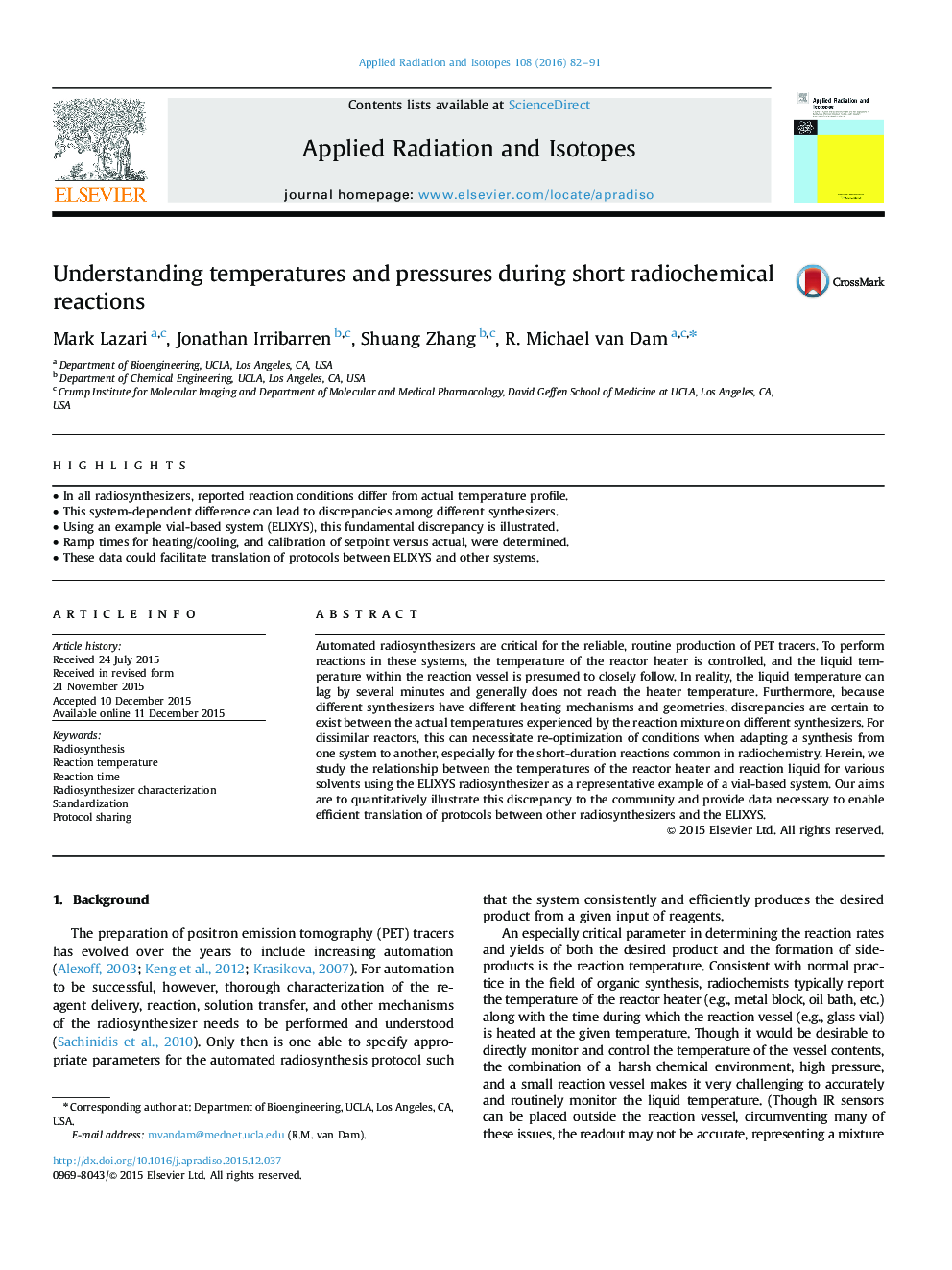| کد مقاله | کد نشریه | سال انتشار | مقاله انگلیسی | نسخه تمام متن |
|---|---|---|---|---|
| 1877480 | 1532089 | 2016 | 10 صفحه PDF | دانلود رایگان |
• In all radiosynthesizers, reported reaction conditions differ from actual temperature profile.
• This system-dependent difference can lead to discrepancies among different synthesizers.
• Using an example vial-based system (ELIXYS), this fundamental discrepancy is illustrated.
• Ramp times for heating/cooling, and calibration of setpoint versus actual, were determined.
• These data could facilitate translation of protocols between ELIXYS and other systems.
Automated radiosynthesizers are critical for the reliable, routine production of PET tracers. To perform reactions in these systems, the temperature of the reactor heater is controlled, and the liquid temperature within the reaction vessel is presumed to closely follow. In reality, the liquid temperature can lag by several minutes and generally does not reach the heater temperature. Furthermore, because different synthesizers have different heating mechanisms and geometries, discrepancies are certain to exist between the actual temperatures experienced by the reaction mixture on different synthesizers. For dissimilar reactors, this can necessitate re-optimization of conditions when adapting a synthesis from one system to another, especially for the short-duration reactions common in radiochemistry. Herein, we study the relationship between the temperatures of the reactor heater and reaction liquid for various solvents using the ELIXYS radiosynthesizer as a representative example of a vial-based system. Our aims are to quantitatively illustrate this discrepancy to the community and provide data necessary to enable efficient translation of protocols between other radiosynthesizers and the ELIXYS.
Journal: Applied Radiation and Isotopes - Volume 108, February 2016, Pages 82–91
